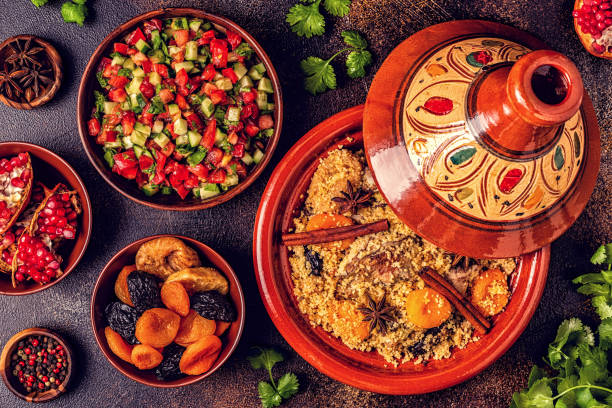Pasta is a staple in many cuisines around the world, beloved for its versatility, comforting texture, and ability to pair with a variety of sauces and ingredients. One fascinating aspect of pasta is its multitude of shapes, each with its unique name and purpose. From the familiar spaghetti to the more obscure orecchiette, countless pasta shapes are waiting to be explored. In this article, we’ll dive into the world of pasta shapes, exploring their origins, characteristics, and the best sauces to pair them with.
- Spaghetti: Perhaps the most iconic of all pasta shapes, spaghetti is long, thin, and cylindrical. Its name comes from the Italian word “spaghetto,” which means thin string or twine. Spaghetti is incredibly versatile and pairs well with a wide range of sauces, from simple marinara to rich carbonara.
- Fettuccine: Fettuccine is similar to spaghetti but wider and flat in shape. Its name comes from the Italian word “fettuccia,” which means little ribbons. Fettuccine is commonly served with creamy sauces like Alfredo or hearty ragù.
- Linguine: Linguine is similar to fettuccine but slightly narrower. Its name comes from the Italian word “lingua,” meaning tongue, due to its flat and elongated shape. Linguine pairs well with seafood-based sauces like clam sauce or simple olive oil and garlic.
- Farfalle: Farfalle, also known as a bow tie or butterfly pasta, is shaped like a bow tie with pinched ends. Its name comes from the Italian word “farfalla,” which means butterfly. Farfalle holds sauces well and is often paired with creamy sauces or served cold in salads.
- Penne: Penne is a tube-shaped pasta with diagonally cut ends. Its name comes from the Italian word “pen,” which means quill or feather. Penne is excellent for holding chunky sauces and is commonly used in baked pasta dishes like baked ziti.
- Rigatoni: Rigatoni is similar to penne but is wider and has ridges along the length of the tube. Its name comes from the Italian word “rigato,” which means ridged. Rigatoni is ideal for hearty sauces like bolognese or sausage ragù.
- Orecchiette: Orecchiette, meaning little ears in Italian, is a small, concave-shaped pasta. Its name comes from its resemblance to a small ear. Orecchiette is commonly served with broccoli rabe or other hearty vegetables.
- Rotini: Rotini is a spiral-shaped pasta, often with a corkscrew-like appearance. Its name comes from the Italian word “rotini,” which means small wheels. Rotini holds sauces well and is commonly used in pasta salads and casseroles.
- Cavatappi: Cavatappi is similar to rotini but with a slightly larger and more elongated spiral shape. Its name comes from the Italian word “cavatappo,” which means corkscrew. Cavatappi is often used in baked pasta dishes and pairs well with creamy sauces.
- Conchiglie: Conchiglie, also known as shell pasta, is shaped like a seashell. Its name comes from the Italian word “conchiglia,” which means shell. Conchiglie is great for catching sauce and is commonly used in baked pasta dishes or pasta salads.
- Pappardelle: Pappardelle is a wide, flat pasta, similar to fettuccine but broader. Its name comes from the Italian word “pappare,” which means to gobble up. Pappardelle is often served with rich, meaty sauces like wild boar ragù or mushroom sauce.
- Ravioli: Ravioli is a type of filled pasta consisting of two layers of dough with a filling sealed between them. Its name comes from the Italian word “riavvolgere,” which means to wrap. Ravioli can be filled with a variety of ingredients, such as cheese, meat, or vegetables, and is commonly served with a simple tomato sauce or butter and sage.
- Tortellini: Tortellini is a small, ring-shaped pasta, typically filled with meat, cheese, or vegetables. Its name comes from the Italian word “torta,” which means cake. Tortellini is commonly served in broth or with a creamy sauce.
- Gnocchi: Gnocchi is small dumplings made from potato, flour, and sometimes egg. Its name comes from the Italian word “nocchio,” which means knot in wood. Gnocchi pairs well with a variety of sauces, from simple marinara to creamy gorgonzola sauce.
- Cannelloni: Cannelloni are large pasta tubes, typically stuffed with a filling such as cheese, meat, or vegetables. Its name comes from the Italian word “canna,” which means reed. Cannelloni is often baked in a rich tomato sauce or creamy béchamel sauce.
These are just a few examples of the many pasta shapes found in Italian cuisine and beyond. Exploring different pasta shapes can add excitement to your meals and open up a world of culinary possibilities. So next time you’re in the mood for pasta, why not try something new and discover a unique favorite shape? Whether it’s the comforting embrace of a bowl of spaghetti or the playful twirl of rotini, there’s a pasta shape out there for everyone to enjoy. Buon appetito!

